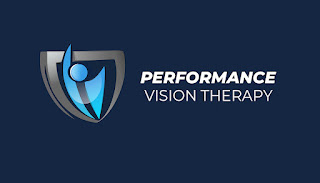Why Speech-Language Pathologists and Vision Therapists are a powerful team
Did you know that speech and vision issues can often be interconnected? That's why Speech-Language Pathologists (SLPs) and Vision Therapists make such a powerful team. While SLPs help with communication and speech issues, Vision Therapists work on visual skills such as eye tracking, teaming, and focusing. These skills are crucial for reading and writing, which can be greatly affected by vision problems. By working together, SLPs and Vision Therapists can provide more comprehensive care for patients and help them overcome their speech and vision challenges. It's amazing to see the progress that can be made when these two professions team up.
How Vision Therapy helps with language skills
If you or someone you know struggles with language skills, then it may be worth considering vision therapy as an option for improvement. Many people don't realize that vision and language skills are closely connected. Vision therapy is a type of therapy that works to train the eyes to focus, process, and interpret visual information more effectively. By improving these visual skills, it can have a positive impact on language skills, such as reading, writing, and speaking. Through a series of exercises and techniques, vision therapy can help individuals with challenges in areas such as tracking, visual processing, and focusing. If you're seeking a way to unlock your full potential in language skills, then exploring vision therapy may be worth your while.
How Speech-Language Pathology can support vision therapy goals
Speech-Language Pathology plays a crucial role in supporting the vision therapy goals of individuals with vision disorders. Vision therapy can be a challenging and time-consuming process, especially for children who are required to undergo multiple sessions. However, incorporating Speech-Language Pathology practices can make it a lot more efficient by aiding in the management of at-home learning and monitoring progress. In speech therapy, the focus is on improving communication and cognitive skills, which can be essential in supporting vision restoration. Additionally, a speech therapist can provide exercises that improve visual attention, coordination, and eye-tracking, which are vital in maintaining the progress made during vision therapy sessions. With the help of advanced technology and innovative teaching methods, Speech-Language Pathology, in collaboration with a vision therapist, can help individuals with vision disorders achieve their goals, optimize their vision, and improve their quality of life.
Tips for collaborating between professions
Collaborating between different professions can sometimes be a challenge, but it is an essential part of providing top-quality care to patients. Speech-language pathologists (SLP's), vision therapists (VT's), and optometrists (OD's) each bring unique expertise to the table, and working together can lead to better outcomes for patients with a variety of conditions. Communication is key, with each professional bringing a clear understanding of their own role and the skills they can offer to the team. It's important to establish clear goals and expectations from the beginning, and to schedule regular meetings to discuss progress and make any necessary adjustments to treatment plans. By collaborating effectively, SLP's, VT's, and OD's can provide comprehensive care that addresses patient needs from multiple angles.
Examples of treatment plans that integrate both therapists
Performance Vision Therapy is a type of treatment plan designed to improve an individual's overall visual performance, including their visual processing, visual acuity, and visual-motor skills. Typically, this type of therapy uses a variety of exercises and activities to help individuals improve their eye coordination, depth perception, and visual tracking. Some examples of treatment plans that integrate both therapists include individualized therapy sessions with an optometrist or vision therapist, group therapy sessions that focus on visual skills development, and home-based exercises and activities that reinforce the skills learned during therapy sessions. By integrating therapists and incorporating various types of activities, Performance Vision Therapy can be a powerful way to help individuals of all ages improve their visual performance and enhance their overall quality of life.
The importance of communication between Speech-Language Pathologists and Vision Therapists for successful outcomes
Effective communication between speech-language pathologists (SLPs) and vision therapists is crucial for achieving successful outcomes in patients with communication and visual impairments. SLPs specialize in diagnosing and treating communication disorders, while vision therapists focus on improving visual processing and perceptual skills. By collaborating and sharing insights, SLPs and vision therapists can provide a more comprehensive treatment plan for their patients, addressing both their visual and communication needs. This can lead to better results and a higher quality of life for the patients. Through effective communication and teamwork, SLPs and vision therapists can work together to help their patients overcome challenges and reach their full potential.
Ultimately, Speech-Language Pathologists and Vision Therapists have much to gain from working together. By understanding the needs of both professionals, and combining their areas of expertise, the treatments of each can be enhanced significantly. The result is an overall improvement in language, literacy, reading comprehension and visual motor skills for those who struggle with these things. Additionally, collaborations between therapists help to ensure better outcomes for clients as a result of comprehensive and integrative treatment plans. If you or someone you know is in need of integrated Speech-Language Pathology/Vision Therapy services, contact Performance Vision Therapy to learn how we can help!





Comments
Post a Comment